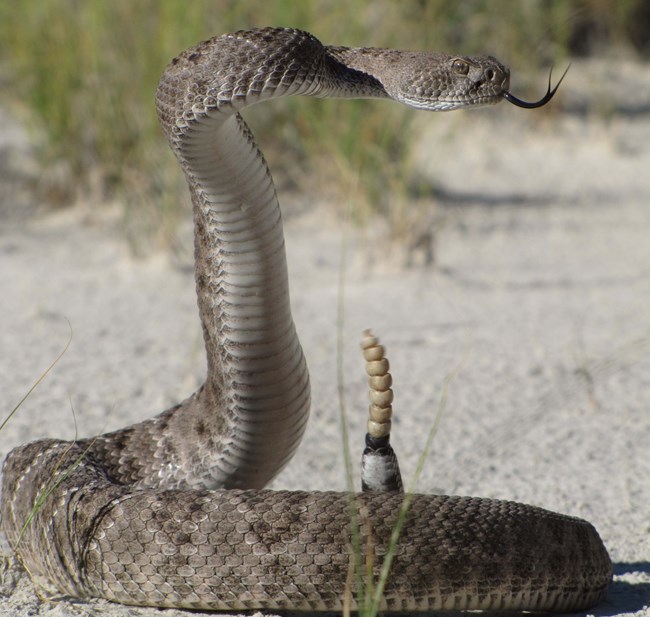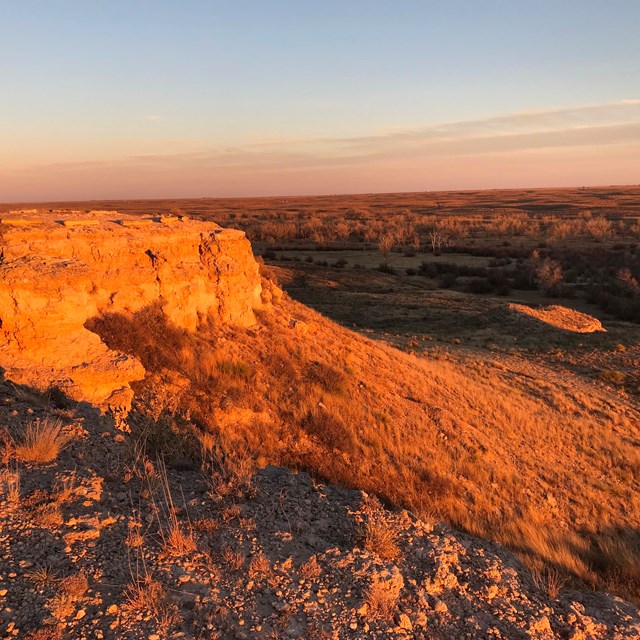Last updated: April 23, 2025
Article
Animals Along the Santa Fe Trail
Often when we think about the Santa Fe Trail, bison and rattlesnakes come to mind. Both certainly served key roles in the ecosystems and experiences of Trail travelers, but they are just the beginning of the diverse animals that have been found along the Santa Fe Trail. Read on to learn about a small selection of these animals, including the tallest bird in North America, a bright orange beetle, and more.

Photo/NPS
American Bison
Bison bison
Bison, commonly known as buffalo, gave sustenance to Native nations – such as the Kiowa, Comanche, Cheyenne, and Arapaho – for millennia and to Santa Fe Trail travelers in the 1800s. Once in the millions, only a few hundred bison remained by 1884 due to overhunting. Conservation efforts have helped rebuild the population.
Read more about the Bison:
What Happened to the Bison? (U.S. National Park Service) (nps.gov)

Photo/US Fish and Wildlife Service
American Burying Beetle
Nicrophorus americanus
The American burying beetle used to be found along the Santa Fe Trail and in 35 states. It now occurs in less than 10% of its historic range. The largest of the North American carrion beetles (1-1.8”), it uses small carcasses for food and reproduction.

Photo/NPS
Black-Footed Ferret
Mustela nigripes
North America’s only native ferret, the black-footed ferret once lived across the Great Plains. The ferret uses prairie dog burrows for shelter. With a declining prairie dog population due to poisoning and land conversion, the ferret population fell to just 18 individuals in 1981. The population has risen to around 500, including a reintroduced population in Colorado. Conservation efforts continue.

Photo/US Fish and Wildlife Service
Great Plains Toad
Bufo cognatus
Santa Fe Trail travelers may have heard the nocturnal calls of the Great Plains toad after a heavy spring rain. The rain fills prairie depressions and floods fields, creating breeding grounds and enticing males to make their long, metallic calls in the night. These calls can last 40 seconds or more! If you want to have a listen, the toad’s breeding season lasts from May to July, peaking in June.

Photo/US Fish and Wildlife Service
Whooping Crane
Grus Americana
The endangered whooping crane is the tallest North American bird (5 ft) and one of the rarest. Whooping cranes have long stopped in central Kansas along the Santa Fe Trail to rest and feed during their arduous migrations in the spring and fall. Habitat destruction and over-hunting have led to steep population declines for the crane, but they can still be seen along the Trail – not too long ago, they were spotted at Fort Larned National Historic Site!

Photo/NPS
Western Diamondback Rattlesnake
Crotalus atrox
Fear of rattlesnakes, including the western diamondback, was common among Santa Fe Trail travelers. For many, this was their first time seeing the venomous rattlesnakes. Numerous travelers recounted close encounters, and some encircled their blankets with prickly rope to ward them off. If they left the rattlesnakes alone, however, there shouldn’t have been any need to worry. Rattlesnakes avoid people, and do not bite as an act of aggression, but rather in defense.


